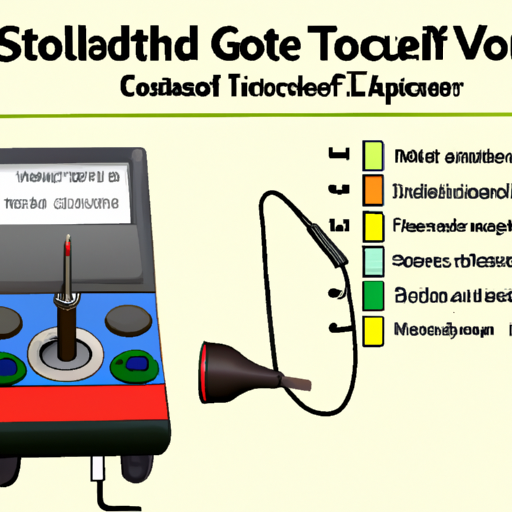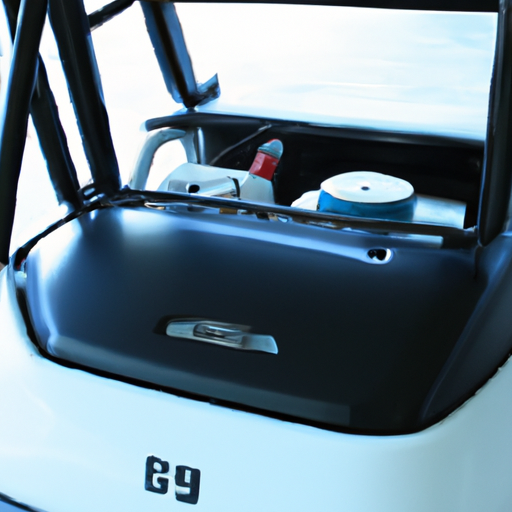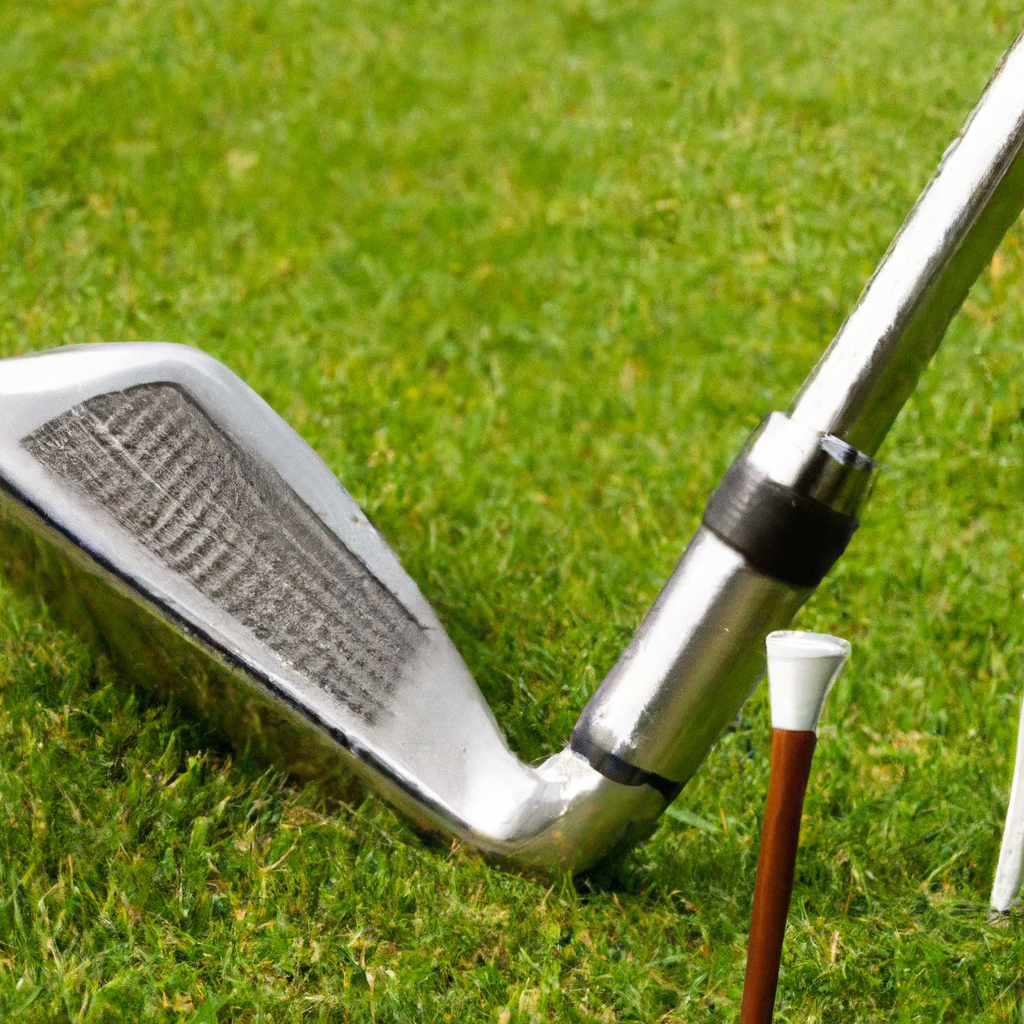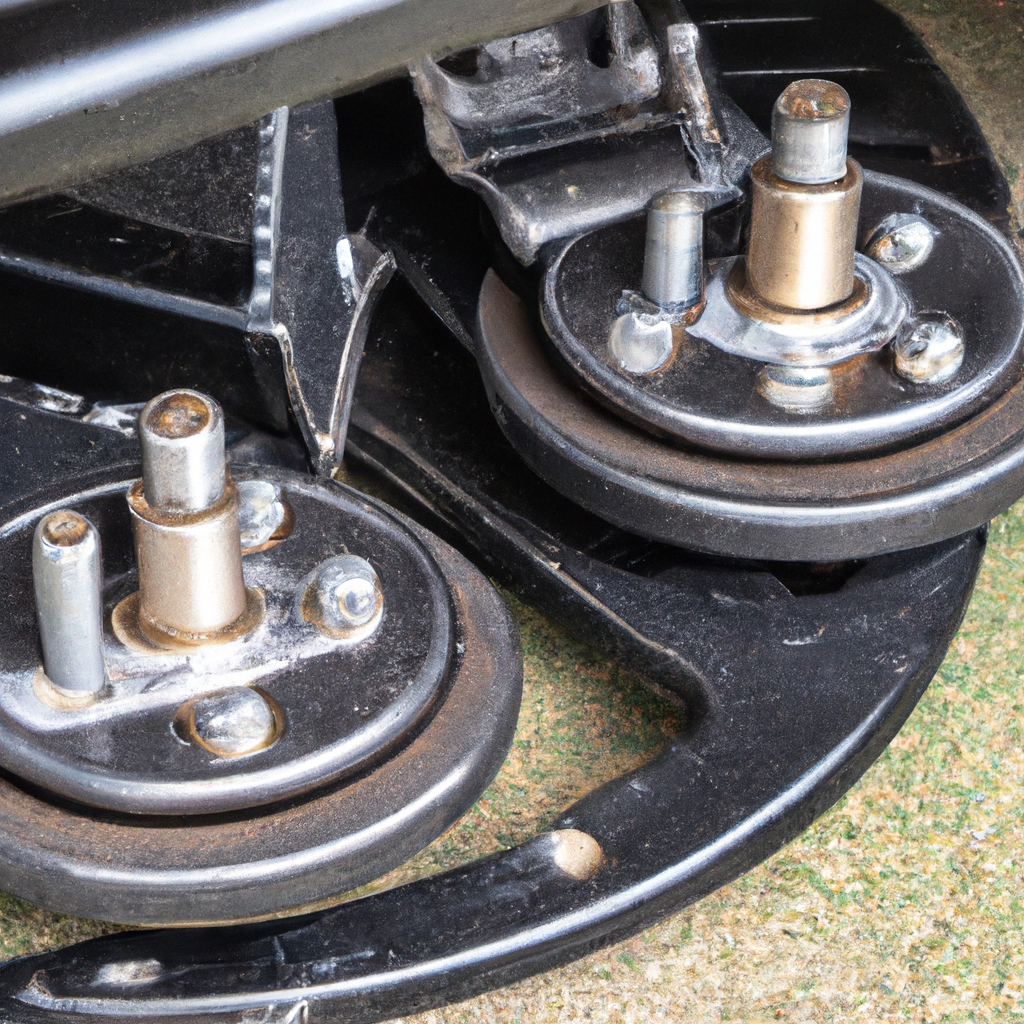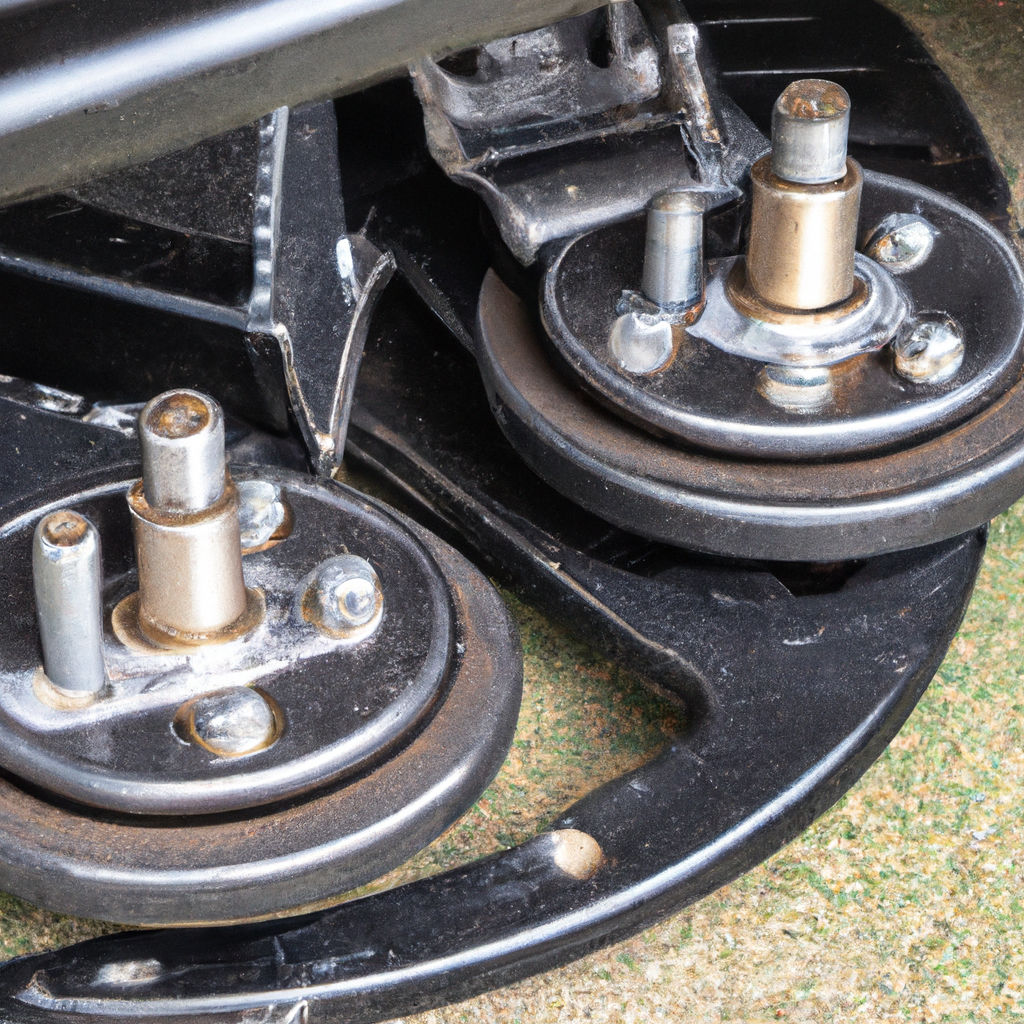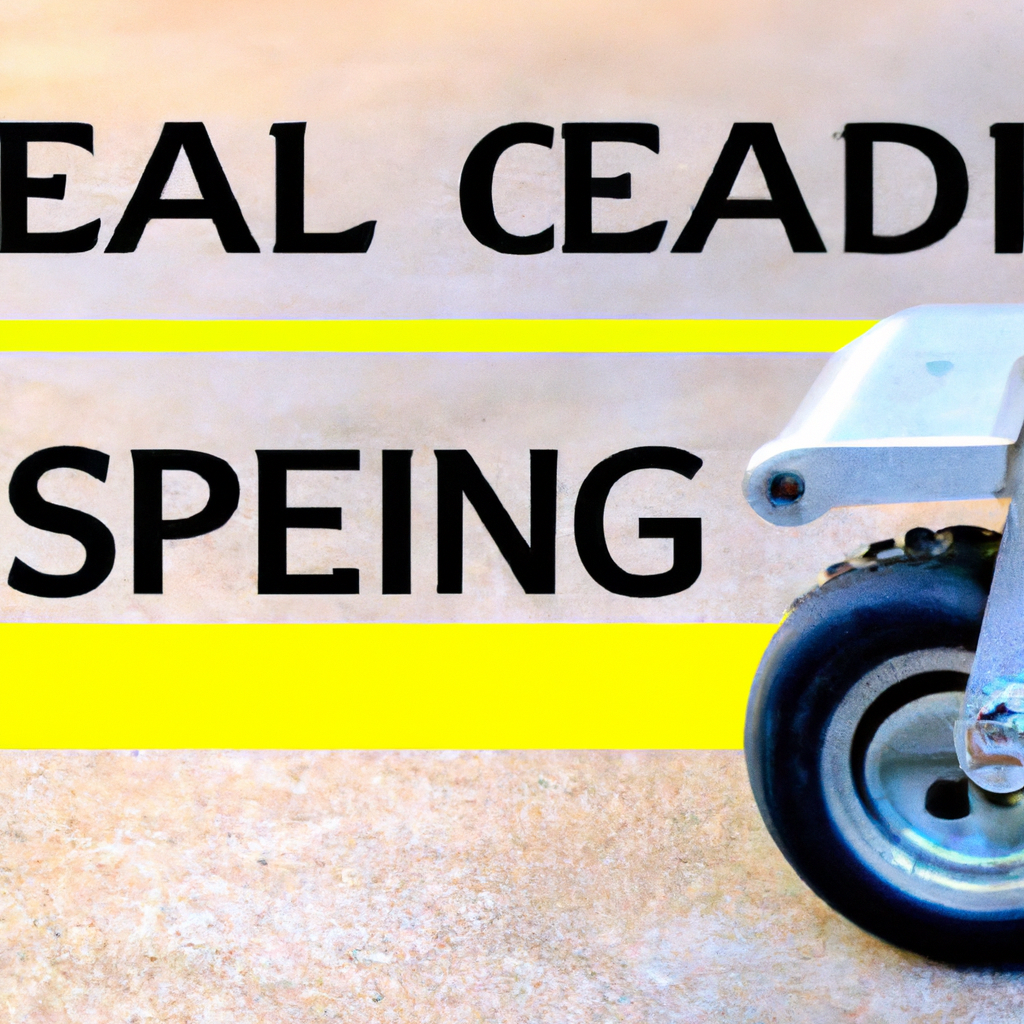So, you’ve got dreams of becoming a professional golfer? Well, you’re in luck because we’ve got just the guide for you! In this article, we’ll take you on a step-by-step journey towards achieving your goal of becoming a pro golfer. From mastering the basics to honing your skills on the green, we’ll cover it all. So grab your clubs, put on your golfing shoes, and let’s tee off on this exciting journey together!
Understanding the Path to Becoming a Professional Golfer

Determining Your Passion and Commitment
Becoming a professional golfer is a journey that requires a strong passion for the sport and unwavering commitment to excellence. Before embarking on this path, take some time to reflect on your love for the game and your willingness to make the necessary sacrifices. Ask yourself if you are truly dedicated to putting in the time, effort, and energy required to reach the professional level.
Assessing Your Golf Skills and Potential
Once you’ve confirmed your passion and commitment, it’s essential to assess your current golf skills and potential for growth. Consider working with a golf professional or coach who can objectively evaluate your game and provide guidance on areas that need improvement. Understanding your strengths and weaknesses will help you develop a targeted training plan to enhance your overall performance.
Understanding the Levels of Professional Golf
Before diving headfirst into the world of professional golf, it’s crucial to have a clear understanding of the different levels within the sport. Familiarize yourself with the various golf tours and circuits, such as the PGA Tour, European Tour, and LPGA Tour, to determine where you aspire to compete. Additionally, learn about the different paths to professional golf, including qualifying tournaments and exemptions.
Researching and Finding the Right Training Programs
To develop the necessary skills and techniques, it’s essential to find the right training programs that align with your goals. Research golf academies, training facilities, and individual coaches who specialize in nurturing aspiring professional golfers. Look for programs that offer personalized instruction, state-of-the-art training facilities, and a track record of producing successful professionals.
Setting Strong Personal and Career Goals
Setting clear and attainable goals is crucial in any pursuit, and becoming a professional golfer is no exception. Establish both short-term and long-term goals for your golf career. These goals should be specific, measurable, achievable, relevant, and time-bound (SMART). Whether it’s improving your handicap, gaining recognition in amateur tournaments, or securing your first professional tour card, having goals will keep you focused and motivated throughout your journey.
Developing a Solid Foundation in Golf
Mastering the Basics of Golf Swing
The foundation of a successful golf game lies in mastering the basics of the golf swing. Take the time to learn proper grip, posture, alignment, and ball position. Work with a qualified golf instructor to ensure you are employing the correct mechanics in your swing. Practice regularly to develop consistency and refine your technique.
Building a Consistent Putting Stroke
One of the most critical aspects of golf is the ability to putt effectively. Building a consistent putting stroke requires focus, practice, and attention to detail. Develop a pre-shot routine and practice various putting drills to improve your accuracy and distance control. Experiment with different putters and grips to find what works best for you.
Honing Short Game Skills
The short game can often make or break a golfer’s score. Spend dedicated time practicing your chipping, pitching, and bunker shots. Develop a variety of shots that allow you to adapt to different course conditions. Work on your feel and touch around the greens, and learn to read slopes and grain to improve your ability to get up and down.
Developing Long Game Techniques
While a solid short game is essential, a powerful and accurate long game is equally crucial in professional golf. Work on your full swing, focusing on generating power and maximizing distance while maintaining control and accuracy. Develop a consistent swing tempo and work on your ball flight patterns to adapt to various course layouts and conditions.
Understanding Golf Course Management
Golf course management is a skill that separates elite golfers from the rest. Understand how to strategically navigate through a course, assess risk and reward scenarios, and make intelligent decisions. Study course layouts, yardage books, and green reading techniques to optimize your scoring potential. Learn to manage your game under pressure and adapt to changing course conditions.
Building Physical Fitness and Stamina
Creating a Well-rounded Exercise Routine
Physical fitness is a critical component of a golfer’s success. Design a well-rounded exercise routine that focuses on improving strength, flexibility, balance, and mobility. Incorporate exercises that target the muscles used in the golf swing, such as core exercises, shoulder exercises, and lower body exercises. Consult with a fitness professional to ensure you are using proper form and technique.
Improving Flexibility and Range of Motion
Flexibility and range of motion are essential for achieving an efficient and powerful golf swing. Incorporate stretching exercises and yoga poses into your fitness routine to improve flexibility in your hips, shoulders, and spine. Increased flexibility will allow for a full and unrestricted swing, reducing the risk of injury and improving overall performance.
Enhancing Strength and Power
Golfers must possess strength and power to generate distance and control in their shots. Incorporate strength training exercises that target the major muscle groups involved in the golf swing, such as the core, back, and legs. Implement exercises such as squats, deadlifts, and medicine ball throws to develop explosive power and generate clubhead speed.
Developing Endurance and Cardiovascular Fitness
Golf tournaments can be physically demanding, requiring golfers to walk long distances and maintain focus for several hours. Improve your endurance and cardiovascular fitness by incorporating aerobic exercises, such as jogging, cycling, or swimming, into your routine. Develop the stamina to perform at your best during long rounds and multi-day tournaments.
Implementing Injury Prevention Strategies
To sustain a long and successful career in professional golf, it’s crucial to prioritize injury prevention. Include exercises that improve stability, balance, and proprioception to reduce the risk of common golf-related injuries. Warm up properly before practice or rounds and listen to your body, taking rest days when needed. Regularly consult with healthcare professionals, such as physical therapists or sports medicine specialists, to address any potential issues promptly.
Working with Golf Coaches and Mentors
Finding and Choosing the Right Golf Coach
Finding a knowledgeable and experienced golf coach is instrumental in your development as a professional golfer. Seek recommendations from fellow golfers or research coaches who have a track record of success. Look for a coach who understands your goals, communicates effectively, and provides constructive feedback and support.
Developing Personalized Lesson Plans
Working with a golf coach should involve developing personalized lesson plans tailored to your specific needs and goals. Your coach should identify areas of improvement and create a plan to address them systematically. Establish a schedule that includes regular lesson sessions, practice routines, and periodic assessments to track progress.
Analyzing and Improving Swing Mechanics
Swing mechanics play a crucial role in a golfer’s performance. Work closely with your coach to analyze your swing and make necessary adjustments to optimize power, accuracy, and consistency. Utilize video analysis tools or launch monitor technology to gain insights into your swing and track improvements over time.
Mastering Course Strategy and Mental Approach
Golf is as much a mental game as it is physical. Work with your coach to develop a course strategy and a mental approach that suits your strengths and playing style. Learn to manage emotions, stay focused under pressure, and adopt a positive mindset. Your coach can provide guidance and techniques to help you navigate the mental challenges of professional golf.
Receiving Feedback and Incorporating Adjustments
Feedback is essential for growth and improvement as a golfer. Be open to receiving feedback from your coach and other mentors in your golf journey. Actively listen to their advice, make necessary adjustments, and commit to continuous learning and development. Embracing feedback will accelerate your progress and help you reach your goals faster.
Competing In Amateur Tournaments
Joining Local Golf Associations and Clubs
To gain valuable competitive experience, join local golf associations and clubs in your area. Participating in organized events and leagues will provide opportunities to compete against other skilled golfers and establish connections in the golf community. These associations often offer tournaments and handicap systems that allow you to track your progress against other players.
Participating in Amateur Championships
Amateur championships offer a higher level of competition and an opportunity to test your skills against top talents in your region or country. Research and register for amateur championships in your area that align with your skill level and experience. Participating in these tournaments will give you a taste of the competitive atmosphere and help you gauge your capabilities.
Gaining Experience in Various Golf Formats
Different tournament formats, such as stroke play, match play, or team events, offer unique challenges and learning opportunities. Participate in a variety of golf formats to broaden your experience and develop adaptability. Learn the nuances of each format and develop strategies to excel in different scenarios.

Setting Performance Benchmarks and Goals
Competing in amateur tournaments provides an opportunity to set performance benchmarks and goals for yourself. Assess your current performance and set realistic targets for improvement. Whether it’s achieving a certain score, winning a particular event, or consistently placing in the top ranks, setting benchmarks will give you a measure of progress and motivate you to strive for excellence.
Building a Reputation in Amateur Circuits
Establishing a positive reputation in the amateur golf circuit can open doors for sponsorship opportunities and recognition. Play with integrity, respect your fellow competitors, and demonstrate good sportsmanship. Building a reputation as a dedicated and talented golfer will make you memorable to those who can potentially support your professional career.
Navigating the Transition to Professional Golf
Understanding the Qualifying Process
Transitioning from amateur to professional golf requires an understanding of the qualifying process specific to the tour or circuit you wish to join. Research the eligibility requirements, registration deadlines, and qualifying tournaments or stages. Take the time to prepare for the qualifiers and ensure you meet the necessary criteria to compete at the professional level.
Securing Financial Support for Expenses
Professional golf involves significant expenses, including tournament entry fees, travel, accommodation, equipment, and coaching fees. Securing financial support is crucial to sustain your career. Explore options such as sponsorships, grants, scholarships, or crowdfunding platforms that can provide the necessary funding. Consider working part-time or seeking financial assistance from family or friends to alleviate financial burdens.
Seeking Sponsorship Opportunities
Sponsorship plays a vital role in a professional golfer’s career, providing financial support, equipment, and exposure. Develop a professional portfolio and reach out to potential sponsors who align with your values and goals. Highlight your achievements, aspirations, and marketing potential to attract sponsorships. Network with industry professionals and attend golf events to increase your visibility and connect with potential sponsors.
Creating a Professional Network
Building a professional network within the golf industry can provide invaluable support and opportunities. Connect with fellow professional golfers, coaches, agents, tournament organizers, and sponsors through networking events, social media, and golf-related conferences. Be proactive in forging relationships and nurturing connections that can propel your career forward.
Evaluating the Right Time to Turn Pro
Deciding when to make the transition from amateur to professional golf is a significant decision. Evaluate your skill level, tournament performance, financial stability, and personal circumstances. Seek advice from experienced professionals, mentors, and coaches to assess whether you are ready to take the leap. Making an informed decision and timing your transition wisely can set you up for success.
Managing the Challenges of Professional Golf
Coping with Pressure and High-Stakes Competitions
Professional golf is accompanied by intense pressure and high-stakes competitions. Develop strategies to cope with the mental and emotional challenges that arise during tournaments. Practice relaxation techniques, visualization, and mindfulness to stay calm under pressure. Embrace the opportunity to compete against the best and channel nervous energy into focused performance.
Balancing Physical and Mental Well-being
Maintaining a balance between physical and mental well-being is vital for long-term success in professional golf. Prioritize sleep, nutrition, and hydration to support your physical health. Dedicate time to activities that promote mental well-being, such as meditation, journaling, or engaging in hobbies outside of golf. Strive for a harmonious equilibrium to optimize your performance and overall happiness.
Maintaining a Consistent Training Routine
Consistency is key in professional golf. Establish a training routine that includes dedicated practice sessions, fitness workouts, and mental conditioning exercises. Ensure your routine is sustainable and aligns with your schedule and personal preferences. Prioritize quality over quantity, focusing on deliberate practice and purposeful training rather than mindless repetition.
Managing Travel, Logistics, and Time
Professional golf often involves extensive travel, managing logistics, and adapting to new environments. Develop organizational skills to efficiently handle travel arrangements, accommodations, and tournament schedules. Optimize your time management skills to balance practice, rest, and administrative tasks effectively. Embrace the challenges of life on the road and maintain a positive and adaptable mindset.
Staying Motivated and Goal-oriented
Maintaining high levels of motivation and staying goal-oriented can be challenging in the face of setbacks and disappointments. Continuously remind yourself of your passion for the game and the reasons why you chose this path. Regularly reassess your goals and remind yourself of your progress and achievements. Surround yourself with a support system that keeps you motivated during both the highs and lows.
Building a Professional Golf Portfolio
Creating an Impressive Golf Resume
An impressive golf resume is essential in gaining recognition and standing out in the competitive world of professional golf. Ensure your resume highlights your amateur achievements, skills, and notable tournament performances. Include relevant certifications, education, and any additional skills that can contribute to your professional golf career.
Compiling and Highlighting Tournament Results
Tournament results are a testament to your skills and competitiveness. Keep a comprehensive record of your tournament performances, including scores, rankings, and notable achievements. Highlight significant wins, top finishes, and consistency in performance to demonstrate your potential as a professional golfer.
Building an Online Presence and Brand
In the digital age, building an online presence is crucial for professional athletes. Create a professional website or online portfolio that showcases your golfing journey, achievements, and goals. Utilize social media platforms to engage with fans, share updates, and connect with potential sponsors or media outlets. Maintain professional conduct and curate an authentic brand that reflects your values and aspirations.
Creating a Strong Social Media Presence
Social media platforms offer a powerful tool for self-promotion and brand building. Regularly share engaging and relevant content related to your golf journey, training routines, and tournament experiences. Interact with your audience through comments and direct messages, building a loyal following. Strive for a balance between personal and professional content to connect with your fans on a deeper level.
Developing Relationships with Media and Agents
Foster relationships with media professionals and agents who can help raise your profile in the golf industry. Attend media events, press conferences, and charity outings to establish connections. Seek representation from a reputable sports agent who can guide you through sponsorship negotiations, media appearances, and endorsement opportunities. Cultivating these relationships will open doors to various opportunities throughout your professional career.
Establishing a Financial Plan
Understanding Income Sources in Professional Golf
In professional golf, income can come from various sources, including tournament winnings, sponsorships, endorsements, appearance fees, and golf-related business ventures. Familiarize yourself with the income sources specific to professional golf and create a financial plan that outlines your expectations and goals. Continuously evaluate and adjust your plan as your career progresses.
Budgeting for Expenses and Travel
Building a successful golf career requires careful budgeting and financial planning. Account for expenses such as tournament entry fees, travel costs, accommodations, equipment, and coaching fees. Develop a monthly and yearly budget that allows for savings, investment opportunities, and financial stability. Seek the guidance of financial professionals to ensure your budget aligns with your income and long-term financial goals.
Managing Taxes and Financial Obligations
As a professional athlete, understanding your tax obligations and financial responsibilities is crucial. Consult with tax advisors and financial experts who specialize in sports-related taxation to ensure compliance with local laws and regulations. Keep meticulous records of your income, expenses, and associated documents for tax filings.
Seeking Endorsement and Advertising Opportunities
Endorsements and advertising contracts can provide substantial additional income for professional golfers. Collaborate with your agent or marketing team to seek endorsement opportunities with brands that complement your values and image. Strive to build a strong personal brand and reach out to companies that align with your goals and aspirations.
Developing a Long-term Financial Strategy
While immediate financial goals are important, it is equally crucial to develop a long-term financial strategy. Prioritize saving and investing a portion of your income for the future. Consider retirement plans, investment portfolios, and real estate opportunities to secure your financial future beyond your professional golf career. Seek guidance from financial advisors to develop a personalized strategy that aligns with your goals.
Continuing Education and Skill Enhancement
Staying Abreast of Golf Industry Trends
The golf industry is constantly evolving, encompassing technological advancements, swing techniques, equipment innovations, and rule changes. Stay updated on these industry trends by following golf publications, websites, and influential figures in the sport. Adopting new techniques and staying ahead of the curve will give you a competitive edge.
Attending Golf Seminars, Conferences, and Workshops
Continuing education in golf is crucial for skill enhancement and staying connected with industry professionals. Attend golf seminars, conferences, and workshops to learn from experts, exchange knowledge, and gain new insights. Engage in discussions, ask questions, and network with fellow attendees to foster growth and expand your professional network.
Seeking Advanced Training and Certifications
Continuous improvement is key to success in professional golf. Explore opportunities for advanced training and certifications in specialized areas of the sport, such as sports psychology, golf fitness, or club fitting. These certifications can enhance your skill set, increase your credibility, and provide additional qualifications for potential clients or employers.
Investing in Mental and Physical Health Development
A golfer’s mental and physical health significantly impacts their performance on the course. Invest in mental health development by engaging in therapy or working with a sports psychologist to manage pressure, stress, and performance anxieties. Prioritize physical health by maintaining a balanced diet, regular exercise routine, and recovery protocols to optimize your performance and overall well-being.
Expanding Knowledge through Golf Literature and Media
Expand your knowledge of the game by immersing yourself in golf literature and media. Read books written by successful golfers, sports psychologists, and coaches to gain insights into the mental aspect of the game. Watch instructional videos, documentaries, and interviews to learn from experienced professionals. Continuously seek to broaden your understanding of golf to refine your strategies and techniques.
Becoming a professional golfer requires determination, discipline, and a lifelong commitment to improvement. By following the steps outlined in this guide, you’ll be well-equipped to embark on this challenging yet rewarding journey. Remember to stay focused, be adaptable, and continue to fuel your passion for the game. With persistence and dedication, you can turn your dream of becoming a professional golfer into a reality.






